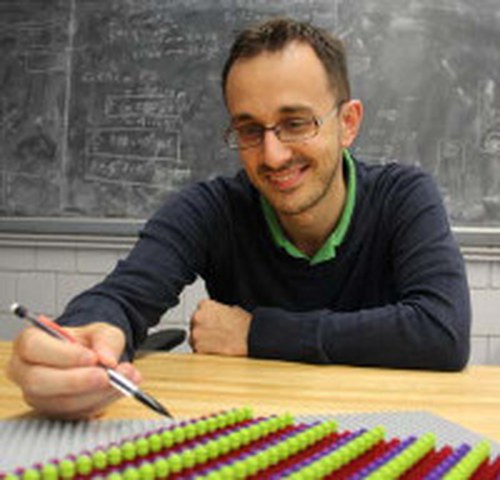Contact Name: Dr. Luca De Marchi
Contact Phone: +39 051 2093777
About the speaker
Stefano Gonella received Ph.D. and M.S. degrees in aerospace engineering from the Georgia Institute of Technology in 2007 and 2005, respectively. Previously, he received a Laurea, also in aerospace engineering, from the Politecnico di Torino, Italy, in 2003. He joined the faculty of the Department of Civil Engineering at the University of Minnesota in 2010, after 3 years of post-doctoral and teaching experience at Northwestern University.
His main research interests revolve around the modeling and simulation of complex wave phenomena in unconventional structures and materials, with emphasis on cellular solids, phononic crystals, and acoustic metamaterials. He is also interested in the development of new methodologies for structural and material diagnostics through the mechanistic adaptation of concepts of machine learning and computer vision.
Abstract
One of the main challenges in the design of versatile engineering devices is achieving tunability, i.e., the ability to tune a system's response to an evolving operating environment. In the context of vibration control, for example, this can lead to the design of semi-active mechanical filters. The opportunities are even broader in the realm of wave control, due to the ability of certain media to experience directional wave propagation. In this context, it is possible to switch on and off certain spatial features of a wavefield and even control the pattern of the available energy paths. These effects can be valuable in many aerospace applications, e.g., the design of smart airfoil skins.
The piezoelectric avenue toward tunability requires inserting a number of piezoelectric elements in the domain to actively modify its mechanical response. Of particular interest are methods involving shunts, whereby the piezo patches are passively connected to appropriately designed electric circuits, to yield a modification of the effective properties of the material and a correction of the global behavior of the host medium. Our investigation focuses on resistive-inductive (RL) circuits, which act as electrical resonators, and negative capacitance (NC) circuits, which produce a modulation of the material stiffness. In this presentation, we will provide some experimental evidence of vibration cancellation in 1D structures using RL shunts, and we will report on the implementation of a so-called tunable rainbow trap. We will then show some preliminary simulation results of spatial wave control in lattice materials.
